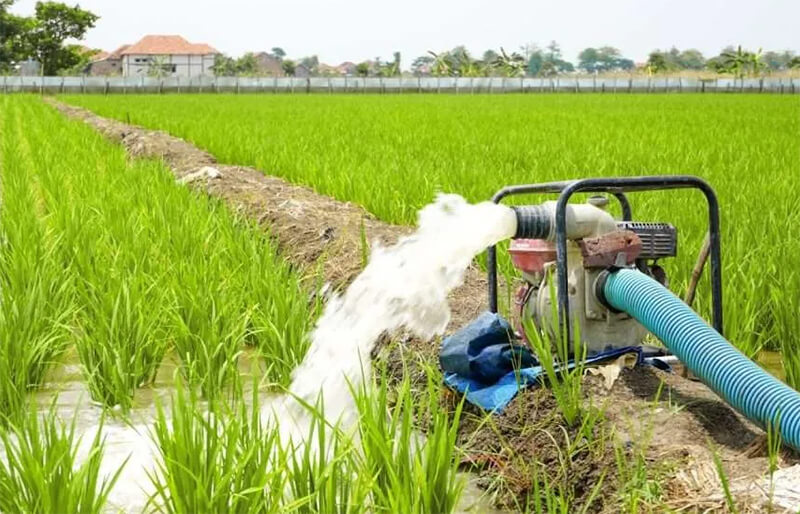safely use and maintain gasoline water pump
Gasoline water pumps play a key role in agriculture, construction, and flood emergencies. They are highly efficient and can move large water volumes with ease. Their power and versatility suit demanding tasks. However, using and maintaining them properly is not only critical to ensuring durability, but also to safety.
In this guide, MATCHUP will explore everything you need to know about using and maintaining gasoline water pumps. Learn safe startup steps and proper usage, and get practical maintenance tips for daily care, help you maximize your efficiency and avoid potential mishaps.
Perhaps you’ve encountered challenges like difficult starting, erratic performance or even sudden failures. Or maybe you’re new to gasoline water pumps and want to make sure to operate them correctly. And no matter what your experience, this guide will help. Read on to learn the keys to safe operation and expert maintenance practices that will save you time, money, and hassles.

Understanding gasoline water pumps
The gasoline water pump’s working principle is to use mechanical energy to transport water. It runs on a gas-powered engine that spins an impeller. The spinning creates suction, pulling water in and pushing it out through a pipe. This motion ensures a steady water flow. It’s perfect for irrigation, flood control and other water needs.
Gasoline water pumps are designed with several key components: a durable gasoline engine as primary power source, a spinning impeller to generate power, a pump housing, and inlet/outlet pipes to move water. Other components, such as a fuel tank to extend operating time and an air filter to maintain engine performance, work together to achieve efficient operation.
Operating a gasoline water pump safely
Follow the steps below carefully, you can operate gasoline water pump safely and avoid damage or injury.
#1. Read the manual
Always read the owner’s manual before using a gasoline water pump. It gives details specific to your model. You’ll find fuel and oil recommendations, maintenance steps, and safety tips. Familiarity with these details helps proper operation and prevents damage from misuse.
#2. Check fuel and oil levels
Second, check gasoline and oil levels before using a gasoline water pump. Use unleaded gas that suits the engine and oil meeting manufacturer’s specs. Low levels risk engine damage or malfunctions. If the water pump has an oil gauge, make sure there is enough oil and use the dipstick to ensure proper lubrication.
#3. Check water pump and its surroundings
Then, check the gasoline water pump for any damage, like leaks or blockages before starting the machine. Clear the area of flammable items and debris, ensure good ventilation to handle exhaust fumes. Place the pump on a flat, stable surface to prevent tipping or shaking.
#4. Prepare gasoline water pump
Attach the inlet and outlet hoses tightly. Use hoses that fit your gasoline water pump model, submerge the inlet hose and filter in the water source. But don’t get too close to the bottom, as debris on the bottom may clog the water pump. Double check all connections to prevent leaks and ensure smooth water flow.
#5. Start the engine
Open the fuel supply valve, place the choke in the “off” position, and continue to pull starter cord on the recoil starter until engine ignites. After engine starts, gradually place choke in the “on” position as engine warms up. Follow specific starting sequence listed in your model’s manual to avoid damaging engine.
#6. Start gasoline water pump
Once the engine is running smoothly, draw water from the water source to allow the water pump to self-prime. Some models may require manual priming, which is filling pump with water before it begins to draw water. Monitor the flow of water through the hose to ensure that water pump primes as expected.
#7. Monitor operation
Watch for strange noises, vibrations, or leaks while gasoline water pump is operating. Confirm water flow is steady, and hose connections are tight. Keep monitoring to catch potential issues early and avoid bigger problems.
#8. Safe shutdown
After using a gasoline water pump, be sure to close it carefully.
- Turn off engine throttle to stop the water pump.
- Close fuel supply valve to stop the gasoline fuel flow to engine.
- Let gasoline water pump cool down before cleaning or using it again. Avoid touching hot parts right after use to prevent burns.
What essential tools do you need to maintain gasoline water pump?
Having these tools ready ensures a smooth and safe maintenance process.
- Wrench set: for tightening and loosening bolts and parts.
- Screwdriver set: for adjusting.
- Oil pan and funnel: for draining and refilling engine oil.
- Air filter cleaning kit or replacement filter: for cleaning or replacing air filters.
- Spark plug wrench and gap gauge: for checking and adjusting spark plugs.
- Replacement hose and clamp: for replacing damaged or leaking parts.
- Rag or rag: Used to clean dirt and debris.
- Safety glasses and gloves: for protecting yourself during maintenance.
Daily maintenance methods for gasoline water pumps
Adding these maintenance tasks to your daily routine can increase the reliability and lifespan of gasoline water pumps. Which ensures it works effectively when you need it most. Follow these daily maintenance methods:
- Ensure that the fuel and oil levels are sufficient before operation to avoid damage caused by dry running of oil level.
- Check and clean air filter regularly to prevent dirt accumulation from hindering airflow. Replace if necessary.
- Follow manufacturer’s instructions for changing engine oil regularly. This helps gasoline water pump run smoothly and reduces wear.
- Inspect all hoses for cracks and leaks, ensure all connections are tight.
- Check impeller for signs of wear or damage, as a faulty impeller will reduce pumping efficiency.
- After use, drain pump’s fuel and water to avoid corrosion. And store gasoline water pump in a clean, dry place.
- Completely drain the liquid in the gasoline water pump, lubricate all parts, keep gasoline water pump will not freeze in winter.
- Regularly test the water pump, this ensures it runs well and helps spot issues early.
How often should you maintenance a gasoline water pump?
Maintenance frequency depends on usage and environment. Usually, check it every 50 hours of operation or quarterly. For heavy use, such as construction or irrigation, maintain it every 25 to 30 hours. Always refer to your gasoline water pump manufacturer’s guidelines for specific intervals.
Following a regular maintenance schedule helps users maximize water output, fuel efficiency and water pump’s durability.
- Better fuel use: A clean air filter and fresh fuel help small engines run efficiently.
- Less wear: Regular oil changes and lubrication reduce friction and extend the life of water pump parts.
- Steady flow: A maintained impeller and clean hoses keep water flowing smoothly.
- Avoid failures: Spotting leaks, loose fittings, or worn seals early stops expensive problems.

Conclusion
Follow operating procedures and put safety first. Perform regular maintenance to ensure your gasoline water pump runs reliably for years to come. If you need water pumps, check out MATCHUP’s range of products. https://outdoormachinery.com/water-pumps/









